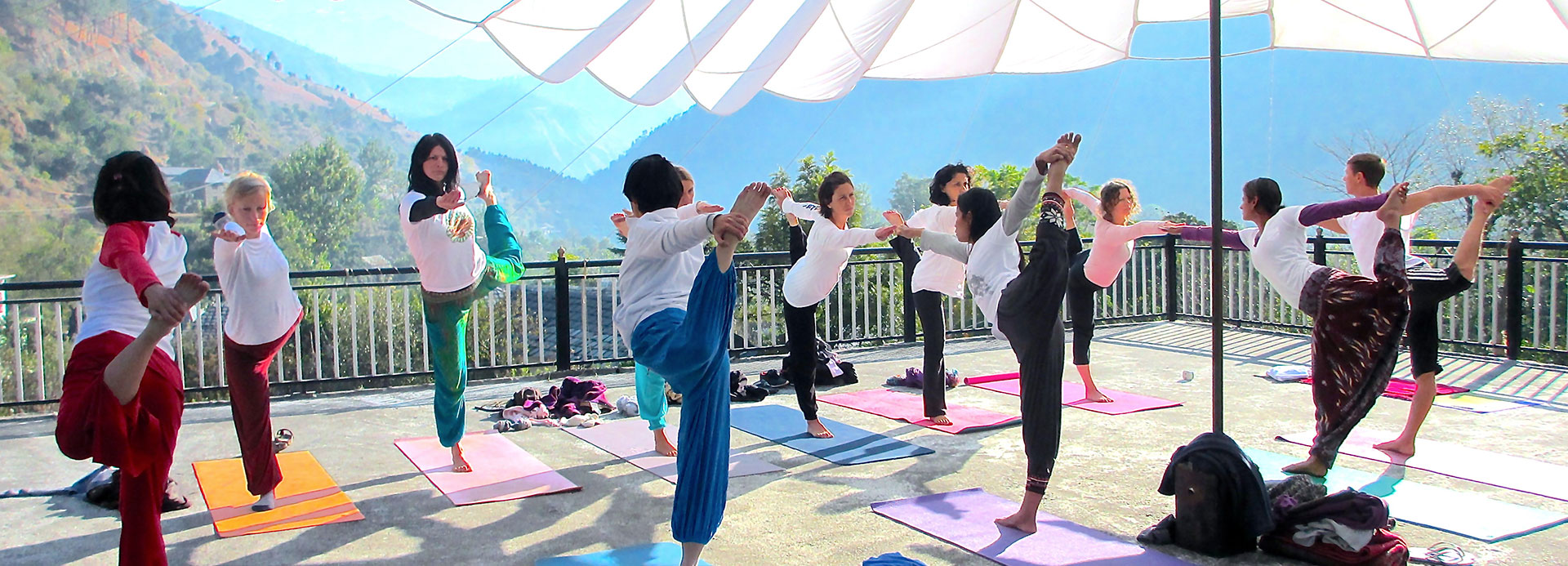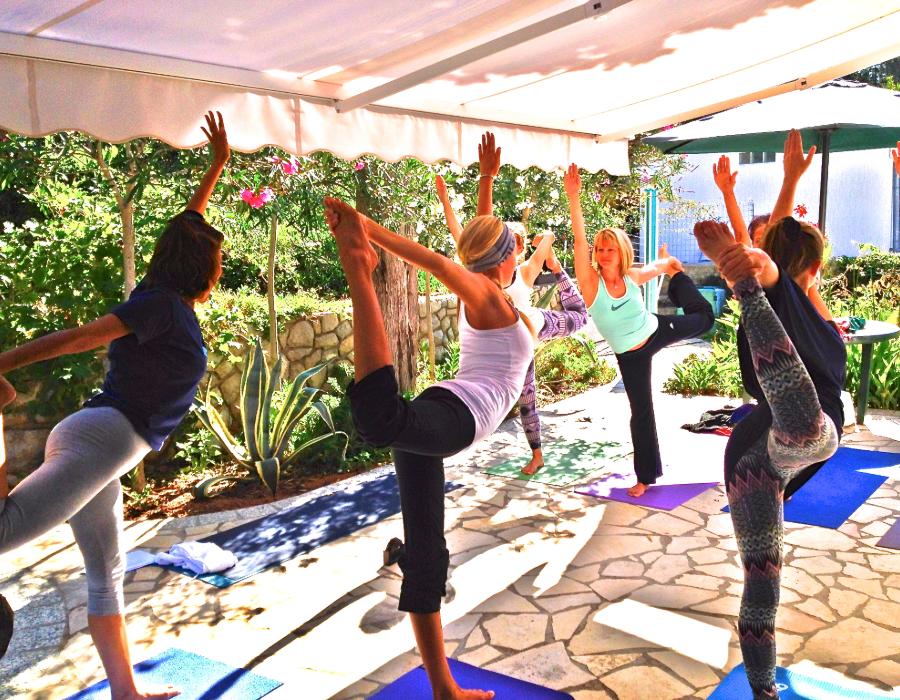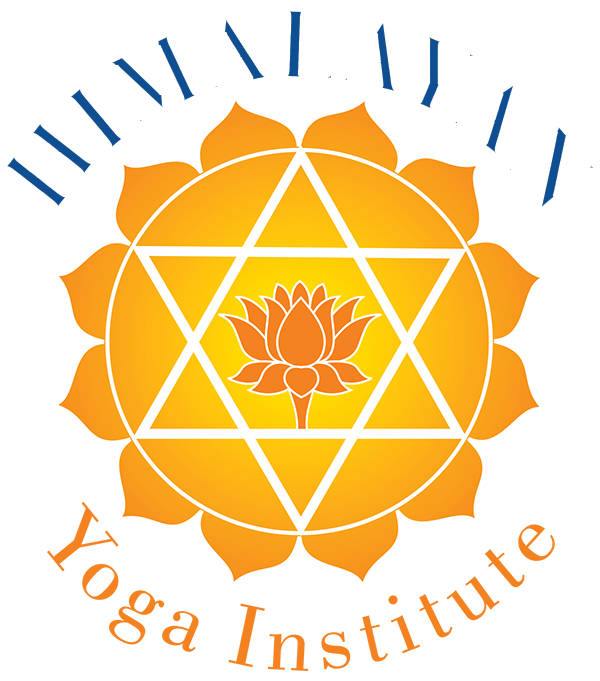
200h YTT Curriculum
Turn your passion for yoga into a career you'll love
while residing 25 days in mystical South India or enchanting isles of Croatia
Expect to discover new realms beyond your limited sense of self and find a love and joy never felt before. Expect an adventurous journey into your inner being.
Our syllabus covers every important aspect of yoga and will equip you with an amazingly wide array of skills and knowledge which will support you in any situation whether you decide to teach yoga classes, workshops or organize yoga retreats.
Highlights of Our Yoga Teacher Training Courses
- We maintain small class sizes for maximum personalized attention
- At the end of the training you will be centred, calm, superbly inspired, beaming with joy and empowered to skilfully guide others into the sacred landscape of their bodies, minds, and hearts, and teach powerful, uplifting, and intelligent classes infused with joy.
- Our yoga instructor certification courses are of outstanding quality, marked by excellence and attention to detail. They are the most thorough and comprehensive ones you will find, while allowing you to experiment within your own body, mind and spirit and experience the profound transformation initiated by the practices for yourself.
- Our school is accredited by Yoga Alliance. Yoga Alliance registers both individual yoga teachers and yoga teacher training programmes (schools) that have complied with educational standards established by the Alliance. Yoga Alliance supports yoga teachers and the diversity and integrity of yoga. Their mission is to lead the yoga community, set standards, foster integrity, provide resources, and uphold the teachings of yoga. A Yoga Alliance Accreditation will give you worldwide recognition.
- The intensive daily schedule includes two meditation sessions, two yoga classes, in depth study of yoga postures, two lectures and workshops. One day a week is lecture-free.
- There is limited space on all our courses.
When choosing a yoga certification programme make sure that plenty of time is given to developing your teaching skills. On our yoga teacher training courses you will be provided with the opportunity to teach single asanas from day two and you will teach classes very early on into the course. You will be given insight into how to give verbal cues, how to demonstrate, observe and correct students with hands-on adjustments.
Curriculum - Topics covered on the course
Asanas (yoga postures) Two types of asana classes will be conducted:
- One daily asana practice class which will provide you with the opportunity to practice your asanas and will help you to develop a strong personal practice of asanas, and
- One daily teaching practice class devoted to understanding how to teach the asanas - you will start learning how to teach asanas from day two. of the course. Hence you will have plenty of time to practice teaching throughout the entire course.
The daily in-depth practice with individual corrections comprises:
- Effective warm-ups and how to incorporate them into the class - various categories of warm-ups
- Sun salutation and its variations
- 66 basic yoga postures
- 100 asana variations, from beginners level to advanced
- Postural alignment
- Guided deep relaxation and yoga nidra
- Release of blocked energy and deep healing
- How to develop flexibility and strength
- Helpful instructions for alignment in the asanas and how to self-correct as well as adjust students
The practical training (asana practice class) allows you to learn asana (Yoga Posture) in detail. You will understand the benefits of each and every asana on the physical, mental and spiritual level, besides that, you’ll also learn which asanas to prescribe to people with various physical and mental problems. Warm-ups, self-massage, meditation and relaxation techniques are also covered.
Teaching Methodology (teaching practice class) will prepare you to conduct a yoga class in real life with confidence; you will learn how to demonstrate and describe asanas, perform adjustments and assist the students in class and also help them to avoid injury during the practice of asanas.
Benefits of Asanas:
Achieving emotional balance by regulating the glandular system
- Balanced mind
- Improved power of concentration
- Ridding the body of excess fat
- Enhanced physical fitness
- Relief of chronic ailments such as constipation, rheumatism, stomach complaints
- Massage of the inner organs
- Improved circulation
- Stabilised thyroid functions
- Muscles and joints remain youthful and supple into old age
Pranayama and Breathing Exercises
- Expands breathing capacity
- Relaxes the nervous system
- Balances the two hemispheres of the brain
- Purifies the nadis (subtle energy channels)
- Stores energy in the chakras
- Calms the mind
- Ujjayi, Surya Bheda, Sitali, Sitkari, Bhramari
- The 10 Vayus (Pranas) and Pranayama
Kriyas, Bandhas and Mudras
- Neti, Nauli, Kapalabhati and tongue cleaning : classical yogic purification techniques for the nose, lungs, abdomen and tongue which will be demonstrated and practiced
- Bandhas: Jalandhara, Uddayana and Mula Bandha
- Bandhatraya Yoga: Mahamudra, Mahabandha and Mahavedha
- Mudras
- General Health rules
- Yogic secrets for a long life
- Lymphatic drainage massage
Yoga Anatomy, Physiology and Bio-Psychology
- Introduction to the major body systems
- The effects of yoga on: the cardiovascular system, respiration, digestion, skeletal and muscular systems, endocrine system
- The science of asanas: their physical and mental benefits
- Yoga and physical culture
- Yogic Diet, Nutrition and the Principles of Ayurveda
- Human Anatomy and Yoga Physiology are important aspects of yoga study, but another relatively unexplored aspect of yoga is Bio-Psychology. Bio-Psychology is the study of glands and hormones and their profound effects on all physical and mental (psychic) functions like growth, digestion, energy levels, emotions, etc.
The History of Yoga
- Various Definitions of Yoga
- A brief history of Tantra
- From Shiva to Krsna
- Patanjali
- The Nath lineage
- Astavkra Muni
- The Kriya Yoga Lineage (Lahiri Mahasaya, Paramahansa Yogananda, etc.)
- Ramakrsna and Vivekananda
- Sri Tirumalai Krishnamacharya and his students
- B.K.S.Iyengar
- Pattabhi Jois
- T.K.V. Desikachar
- Shrii Shrii Anandamurti
Karma and Reincarnation
- The law of action and reaction
- Karma and Samskara (Samskara means reactive momenta to past actions and is not to be confused with the term Samsara, which means the wheel of birth and rebirth)
- Life, death, rebirth and liberation
- Destiny, Prapatti Vada and self-effort
Teaching practice
What qualities should a yoga teacher have? This module will focus on the qualities of a good yoga teacher with an emphasis on teaching methodology, e.g. how to communicate with students, how to demonstrate, observe the student in the class to avoid injury during practice of asana. We will also discuss the personal and professional ethics of a yoga teacher.
Besides you will receive sample templates for a Hatha, a Vinyasa and a Rajadhiraja class. You will also be given a fully designed beginner's course which you can apply in real life as soon as you have completed the course.
- How to teach the basic postures, breathing exercises and elementary meditation to beginners and intermediate students
- Setting up of a proper environment for class
- Mindful Sequencing
- Use of voice and presentation skills
- General pointers on teaching a class
- The Basic Rajadhiraja class
- The Dynamic Vinyasa class
- Beginners' Course
- Advanced Postures
- Yoga for Children
- Yoga for Older Citizens
- Yoga for Pregnancy
- Relaxation
- Detailed correction workshops
- In the second half of the training course, participants will teach each other under the guidance of an experienced instructor
Yoga nutrition
- Vegetarianism for ethical, spiritual and health reasons
- How diet affects the mind
- Proper balance of the main nutrients
- Ayurvedic principles of nutrition
- Healing effects of fasting
Meditation
- Guide to meditation
- What is meditation
- Why meditate
- Experiences in meditation
- Mantras as powerful sound energy healing and purifying the chakras, nadis and body cells
- The science of mantra
- The 3 qualities a mantra must possess
- Mantra initiation (if desired)
Rajadhiraja Yoga
- Ashtanga - the 8 limbs of yoga
- Ethics and moral principles
- Hatha Yoga
- Koshas – the five layers of the mind
- Kaoshikii and Tandava: dynamic yogic dances for women and men
- Concentration and meditation
- The six lessons of Sahaja Yoga
- 16 points of yogic life
Kundalini Yoga
- Understanding Kundalini Shakti
- Macrocosm and Microcosm
- The Tantric theory of creation
- Nirguna and Saguna Brahma
- Shiva and Shakti
- The 7 Chakras
- The awakening and raising of Kundalini Shakti
Bhakti Yoga
- Kirtan: devotional chanting of Sanskrit mantras
- Chanting opens the heart and purifies the mind. With daily chanting, you develop a strong feeling of devotion and a very pure inner vibration. In devotional chanting correct pronunciation, devotional attitude and awareness of meaning (ideation) are all-important.
- Creativity and artistic expression for spiritual development and upliftment
- Mandala Art workshop - you will create your own mandala in this workshop
- Bhajans (devotional songs)
- Prabhat Samgiita (devotional music for mental expansion)
- Indian Classical Dance
Karma Yoga
- Karma Yoga in the Bhagavad Giita: relinquishing the attachment to the fruits of our actions
- Karma yoga is also the practice of selfless service. It maintains physical and mental health, counteracts depression and refines your mind and heart.
- The spirit of service in daily life
- The law of cause and effect
- Samsara, the wheel of birth and death - exploring how Karma yoga allows every person to be free here and now.
Jinana Yoga
- Yoga philosophy
- The History, Science and Philosophy of Tantra
- The Intuitional Science of the Vedas
- Upanishads
- Contemporary Yoga philosophy: Brahmachakra
- Conquest of death and immortality
Bhagavad Gita
- Krsna and the Bhagavad Giita
- Bhagavad Dharma and the concept of dharmaas given by Shiva
- Considered one of the greatest spiritual texts of the world, the Bhagavad Gita contains subtle and profound teachings and has a universality which embraces every aspect of human activity. It symbolises the solution to the eternal struggle between the spiritual and the material in every human being
- Study of the text and commentaries
The Business of Teaching Yoga
- Secrets to becoming an exceptional yoga teacher
- Marketing yourself and your services
- How to set up a Successful Yoga Teaching Business
- How to Establish a Powerful Personal Practice
- How to set up classes
Satsang
Satsang literally means “good company”, it means being in companionship with the truth and with the wise. The course satsang consists of half an hour silent meditation, half an hour chanting and a talk or reading on aspects of yoga philosophy. It will help you to develop a strong and steady meditation practice and show you the way to peace and happiness.
Prerequisites
A high degree of self-motivation is required for all aspects of the course. A basic knowledge of yoga postures and philosophy is helpful but not essential. A sincere desire to learn and openness to the teachings of yoga is required. Training to be a yoga teacher requires dedication and faith in the process of yoga.
The practice and especially the teaching of yoga demand a high degree of self-discipline and purity. To ensure the success of the program, participants are required to attend all spiritual activities, meditation sessions, lectures and asana classes.
Unfortunately, it is not possible to cater to personal dietary preferences beyond the yogic-vegetarian meals.
The teacher training modules serve to educate yoga health professionals, yoga instructors, yoga students or anyone with an interest in the science of Yoga.
Our trainers are internationally recognized teachers and are highly skilled and experienced in the field of yoga education.
Activities and Excursions
One day per week is lecture-free to enjoy some leisure time and excursions specific to the area and to deepen your study..
Optional Activities Include (depending on the location):
Hiking, biking, swimming, snorkelling, rafting, water sports and boating – rock climbing, winter sports and the hot springs. For the less active – you will also find shopping and tourist attractions.
Training designed according to the ancient gurukula educational system
Your daily life and personal practice will be integrated with your training and preparation to become a yoga teacher, while living under the same roof with your teachers and fellow students. For nearly 4 intense weeks of ashram living you will strengthen your own yoga practice through self-discipline, while probing into the nature of mind, body and spirit.
You will build a firm foundation of yoga practice, while gaining the skills of teaching others intuitively and with confidence.
Our 200h YTT will expand your horizons and your consciousness. It is designed not only to make you into the best yoga teacher you can be, but also into a true yogi and yogini, so that you may embody what you teach. You will experience a profound rewiring of your body, clearing of mind and purification of your emotions.
Our training courses meet and exceed the Yoga Alliance standards’ guidelines and you will receive a thorough understanding of asana, mudra, bandha, teaching methodology, theory, yoga history, modern yoga, Patanjali’s 8 limbs, the 3 main branches of yoga, mantra, meditation and tantric philosophy. Asanas will be explored through our signature Rajadhiraja Yoga Method and its application to Hatha, Vinyasa and Yin yoga. You will also have an opportunity to experience authentic Bhakti yoga and Kirtan ceremony.
You will receive more than 10 Signature Templates for asana classes (including a complete course curriculum for beginners), predesigned and ready to go, while also learning about the creative act of sequencing yoga classes so you can design your own classes in the future. You will have a chance to start teaching simple asanas from day one and then progressively attend to teaching classes as the course advances. Future teachers will have plenty opportunity to practice teaching and receive feedback, so they can polish their teaching skills. You will leave the training confident to teach yoga classes with heart, authenticity and passion. Even if you have no plans to teach yoga upon completion of the training, our experience shows that participants come away with joyful inspiration not just regarding their yoga practice but for living life to the fullest and manifesting their dreams. Eventually, you will have great clarity about your greatest gifts and talents, that are seeking to find expression. We empower our students to become leaders in their communities and share not just yoga but their wisdom and insight with others.
You will come away with a powerful personal practice that will balance your mind, awaken your chakras and help you firmly establish your life’s path. Your life’s calling will then manifest in ways, more wonderful, than you ever expected.
Getting There
Students are responsible for making their own way to the Course. Details of how to get there will be sent to you upon registration. Please arrive on the date indicated as the course start date. Departure date is the date indicated as the last date of the course. Please do not arrive late or plan to leave early.
We are now offering a yoga teacher training intensive in two locations: in South India and on the beautiful dolphin island Losinj, Croatia.
“The yoga therapy components of our training are based on our qualification with the 'Himalayan Yoga Institute of Integrated Therapies', not derived from our status as a RYS with Yoga Alliance Registry."

